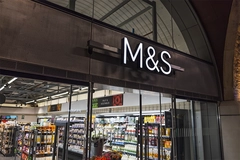
- Industry news
Industry news
- Category news
Category news
- Reports
- Key trends
- Multimedia
- Journal
- Events
- Suppliers
- Home
- Industry news
Industry news
- Category news
Category news
- Reports
- Key trends
- Multimedia
- Events
- Suppliers
Convergence Trend Likely to Intensify in Beverage Industry

A new Rabobank report titled Convergence in the Beverage Sector states that beverage companies are at a watershed moment. With an unprecedented level of margin pressure and changes in consumer preferences, they must develop new strategies to improve profitability.

2 jun 2010 --- Changing industry dynamics are expected to push beverage companies to increasingly look beyond their core segments to improve profitability. A new Rabobank report states that beverage companies are at a watershed moment. With an unprecedented level of margin pressure and changes in consumer preferences, they must develop new strategies to improve profitability.
A new Rabobank report titled Convergence in the Beverage Sector states that beverage companies are at a watershed moment. With an unprecedented level of margin pressure and changes in consumer preferences, they must develop new strategies to improve profitability.
The combination of changing consumer beverage preferences and an unprecedented level of retail pricing pressure has created a challenging environment for the beverage sector. To tackle some of those challenges, beverage companies often practice convergence through mergers and acquisitions, joint ventures, or distribution agreements between different segments of the beverage sector.
“Properly managed, convergence can be a means to grow revenues, increase operating efficiencies and improve the strategic positioning of a company’s brand portfolio without cannibalizing existing brands and avoiding potential anti-trust obstacles, ” says Steven Rannekleiv, Executive Director of Rabobank’s Food & Agribusiness Research and Advisory (FAR).
Beverage companies have often sought mergers and acquisitions as a means of growing revenues and creating operating efficiencies by leveraging existing assets and technology. However, acquiring competitors within their core segment is becoming increasingly complicated, either because of potential cannibalization of brands or because of possible anti-trust issues. As a result, many beverage companies are expected to look for opportunities outside of their core segments.
For example, in the United States, the top three rum suppliers have 75 percent market share; the top three American whisky suppliers have 80 percent market share; and the top two beer competitors control 78 percent of the market. Additionally, Coca-Cola and PepsiCo control more than 65 percent of the total non-alcoholic beverage market (excluding dairy, coffee, tea, etc.) and more than 75 percent of the carbonated soft drink market.
“Clearly, the opportunities for growth within their core segments are now limited for these market leaders,” says Rannekleiv. “Acquisitions outside a company’s core segment can allow the company to grow revenues and improve operational efficiency in a mature market without cannibalizing existing brands and without raising anti-trust concerns.” Although revenue growth may be an obvious benefit of convergence, the opportunity to improve cost efficiencies is also important. Combining operations across segments can help reduce costs and maximise distribution efficiency.
The convergence process can help beverage companies improve their strategic positioning by building a strong portfolio of must-have brands across numerous segments. While convergence helps improve negotiating strength with retailers, it can also improve a company’s strategic positioning against competitors. By acquiring a complete portfolio of products, beverage companies can become a one-stop-shop for their clients, taking sales opportunities from competitors. “A full range of products gives a beverage company a key advantage over competitors that can only supply a limited range of products,” says Rannekleiv.
Source: Rabobank









